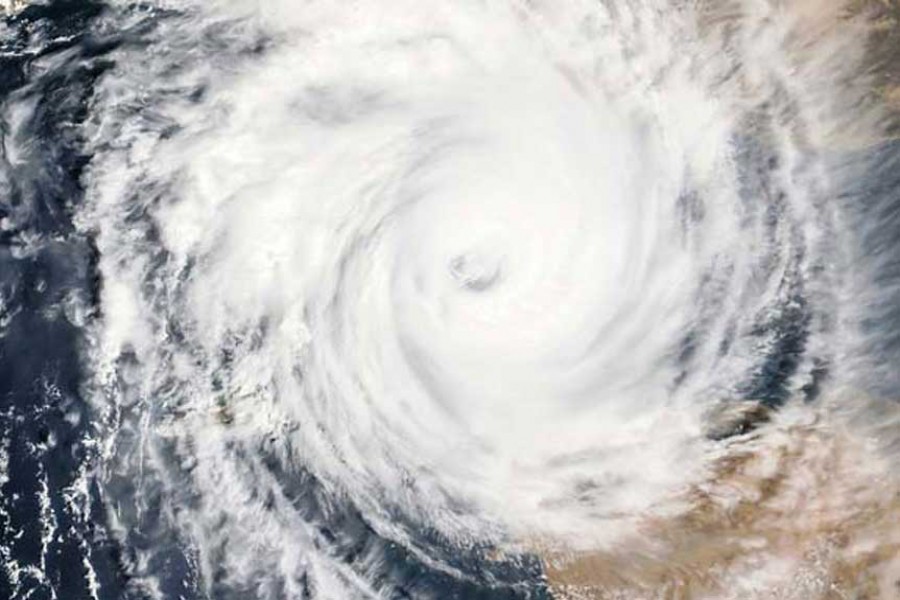Major cyclones have drastically increased in Bangladesh in recent decades. During the period 1978-2016, a total of 131 tropical cyclones (TCs) formed in the Bay of Bengal, showing annual mean occurrence of 3.6 TCs. Bangladesh was hit by 33 tropical cyclones, which constitute about 25 per cent of the total number of cyclones formed during that period. According to the current statistics, an average of 1.15 tropical cyclones hit Bangladesh each year. The distribution of land-falling cyclones during the period 1961-2013 over different regions of Bangladesh coast is shown in Table 1 (http://www.bangladeshdeltaplan2100.org).
It is observed that Noakhali and Chittagong, including the eastern part of Meghna estuary, weres hit by about 26 per cent of the cyclones of Bangladesh and the south-eastern coast of Cox's Bazar, Teknaf and adjacent areas by 29.5 per cent (Table 1). The south-central and south-western coastal zones were hit by 16 per cent and 28 per cent respectively. It is evident from these 23-year records that the tropical cyclones hit the Meghna estuary and south-eastern coast mostly in the month of May (pre-monsoon) and the central and western coast in the months from October-November (post-monsoon).
TROPICAL CYCLONE PROJECTION AND INCREASING SEA SURFACE TEMPERATURE (SST): According to recent studies, the increasing frequencies of intense TCs account for an upward trend under conditions of climate change. These are projections based on theory and high-resolution dynamical models. Among others, a relationship between maximum sustainable wind speed (MSWS) and the sea surface temperature (SST) for the Atlantic Ocean suggests that a 1°C rise in temperature will increase the MSWS by 4 per cent, 2° C by 10 per cent, and 4°C by 22 per cent.
According to high resolution regional climate model (HadRM2) (50km x 50km grids) for the Bay of Bengal (run with an annual increase of 1.0 per cent in the greenhouse gas concentration for 2041-60 from 1990 onwards), a 36 per cent increase in the frequency of tropical cyclones in the pre-monsoon season and 48 per cent increase in post-monsoon season can be observed. However, existing modelling studies also consistently show a decrease in the globally averaged frequency of tropical cyclones by 6-34 per cent.
Increasing sea surface temperatures (SST) in the Bay of Bengal would cause the wind speed of TCs to intensify further. This means, more intense TCs are likely to occur in the Bay of Bengal. If the SST in the Bay of Bengal increases by 1.5° C by 2050, then the maximum sustainable wind speed (MSWS) will increase by 69 per cent (Fig. 1).
TROPICAL CYCLONE PROJECTION IN INCREASING EL NIÑO/LA NIÑA-SOUTHERN OSCILLATION (ENSO): From a historical perspective, it has been observed that many major cyclones that hit Bangladesh were either a year of El Niño or La Niña. To provide some background, Table 2 shows the top cyclones (since 1960) and the El Nino/La Nina events during those years:
The above chronology (Table 2) shows that most of the major cyclones that hit Bangladesh in different periods were either a year of El Niño or La Niña event, or a transition period from one to the other event. So, the question can be raised now - do El Nino/La Nina events intensify the threat of cyclonic activities in Bangladesh? Based on the available findings, the answer is yes!
Currently, the ENSO response to global warming differs strongly from model to model, and to a certain extent the science is as yet inconclusive here. However, recent findings suggested that extreme El Niño events (i.e. 1982-83, 1997-98, and 2015-16) could double in the future due to greenhouse warming; and it is projected that it can occur roughly every 10 years instead of every 20. As observed, compared to 1950-1980 (data related to El Niño/ La Niña events is not available before 1950), the number of El Niño/La Niña events has considerably increased in the recent past and it is likely to continue in future. The anticipated effect of changing climate is therefore the possible increases in the intensity of extreme cyclones in Bangladesh.
Dr. Md Rashed Chowdhury is currently working as Principal Research Scientist (Graduate Faculty) of the Pacific ENSO Applications Climate Center;
Email: [email protected]


